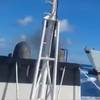Drilling Deep: Pushing the HPHT Envelope
With demand for hydrocarbons increasing and costs rising, the E&P industry is also facing numerous technical challenges including the development of High Pressure – High Temperature (HPHT) reserves, explains energy forecasters, marine market researchers & renewables analysts Douglas-Westwood in 'DW Monday'.
HP / Extreme HP typically refers to borehole pressures between 10,000 psi and 20,000 psi whereas HT / Extreme HT refers to borehole temperatures between 300 degrees Fahrenheit and 400 degrees Fahrenheit. Pressures and temperatures outside these ranges are referred to as “Ultra-HPHT”, which represents the absolute limits of current technology.
While the HPHT term is widely used, it should be noted that pressure and temperature do not always correlate: in Thailand many wells have extremely high temperatures without correspondingly high associated pressures. The term HPHT is also commonly associated with the high value offshore markets despite the large market opportunity existing onshore. A good example is the Haynesville shale gas play where one E&P Company has completed more than 300 HPHT wells.
HPHT reservoirs drive new technology requirements in a number of ways. For example, drilling in HP reservoirs necessitates heavyweight drill pipe (HWDP). HWDP can be at the upper limits of the shear rams on older BOP stacks, which are intended to cut through pipe in an extreme well control event. High temperatures also impact on directional drilling where some types of drilling motors rely on polymer sealing elements, which have temperature limitations. In this particular example, the operational envelope has expanded greatly through new material formulations.
In order to meet the HPHT challenge, there is ongoing work at a joint industry level, such as BP’s “20K” project (20,000 psi, 300 degrees Fahrenheit), and within the R&D departments of the Oilfield Services (OFS) companies.
The ability to develop new tools and services for the most extreme wells is increasingly viewed as a unique competitive differentiator. As a consequence, the OFS giants are working on a suite of technologies including Logging-While Drilling (LWD) tools, & Perforating Guns that can function reliably in ultra-HPHT reservoirs.
As the HPHT envelope continues to expand, E&P Companies are simultaneously trying to bring upstream costs under control. Clearly these drivers may not always be compatible. However, the size of the prize makes development of HPHT reserves a necessity, especially for International Oil Companies (IOCs).
Source: Douglas-Westwood 'DW Monday'












